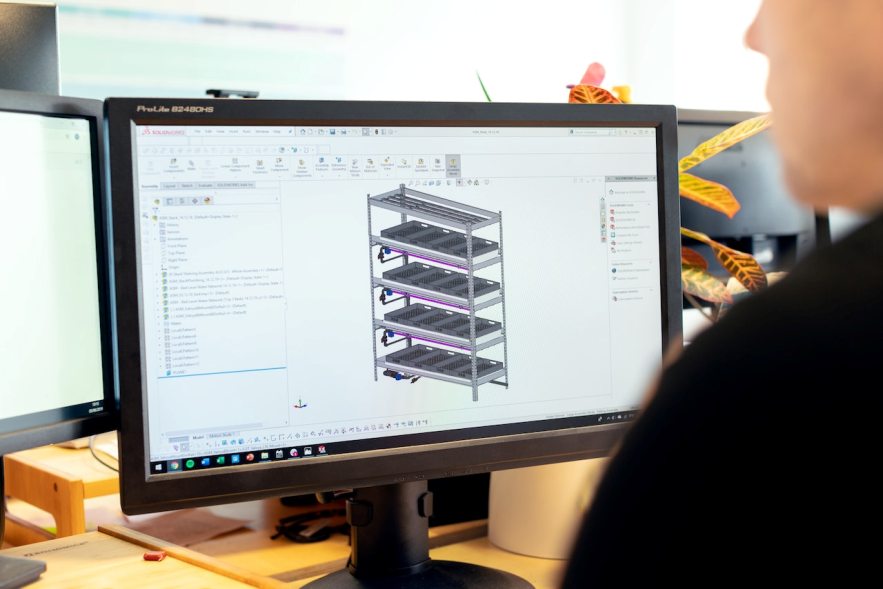In the dynamic world of architecture, technological advancements have been transforming the way professionals design and construct buildings. With the rapid rise of architecture software, architects have gained access to a powerful array of digital tools that augment their creativity and efficiency. These software solutions have not only revolutionized the design process but have also significantly impacted career development within the field.
Enhancing Design Capabilities
Architecture software has opened up a realm of possibilities for architects by granting them access to sophisticated design tools. Gone are the days of relying solely on hand-drawn blueprints; now, architects can explore intricate 3D models and generate photorealistic renderings of their projects. This advancement has facilitated more innovative design thinking and enabled architects to visualize their concepts in greater detail. As a result, architects who embrace and master these software tools find themselves at the forefront of design ingenuity, setting themselves apart in the competitive industry.
Streamlining the Design Process
The adoption of architecture software has revolutionized the traditional design process, significantly increasing efficiency. Design iterations that used to take weeks can now be accomplished in a matter of days, enabling architects to meet tight deadlines without compromising on quality. Also, the collaborative features of these software solutions allow architects to work seamlessly with other professionals, such as engineers and interior designers, fostering a more integrated approach to projects. By becoming adept at using these streamlined tools, architects can position themselves as indispensable assets within their firms, paving the way for career advancement and leadership roles.

Embracing Sustainable Design
Sustainability has become a pivotal consideration in contemporary architecture, and architecture software plays a pivotal role in promoting eco-friendly practices. These software tools offer simulations and analysis capabilities that help architects evaluate the environmental impact of their designs, including energy consumption and material efficiency. In this way, architects can advocate for sustainable solutions and demonstrate their commitment to environmentally responsible design. As the demand for green buildings continues to rise, architects with expertise in sustainable design through software applications are finding themselves in high demand, propelling their career growth in new directions.
Expanding Digital Literacy
As architecture software becomes more integrated into the design process, the need for architects to be digitally literate has grown exponentially. Learning Rhino for architecture and mastering these tools have become essential career development goals for aspiring architects and seasoned professionals alike. Firms increasingly seek candidates with proficiency in relevant software programs, making it a critical aspect of career progression. Architects who invest time in upskilling and staying updated with the latest advancements in architecture software position themselves as adaptable and forward-thinking professionals, enhancing their employability and potential for career growth.

Unlocking Opportunities in Specialized Sectors
Architecture software has diversified the industry, paving the way for specialized career paths. Professionals can now focus on niche sectors like parametric design, computational architecture, or building information modeling (BIM). Architecture software enables architects to explore unique avenues, and those who develop expertise in these specialized areas find themselves in high demand. This shift offers opportunities to work on cutting-edge projects and collaborate with interdisciplinary teams, enriching their experience and propelling their careers in exciting new directions.
Embracing Remote Collaboration
The digital nature of architecture software has facilitated remote collaboration, allowing architects to work on projects from anywhere in the world. This newfound flexibility has opened doors for international collaborations and expanded the global reach of architectural firms. Architects who embrace remote work and leverage architecture software to facilitate seamless communication across borders can broaden their networks and access a wider range of projects, enhancing their portfolio and career prospects.
Embracing Lifelong Learning
Finally, the impact of architecture software on career development extends beyond the initial stages. Lifelong learning becomes a crucial aspect of staying relevant in the ever-evolving field of architecture. As software tools continually advance, architects must embrace continuous learning to keep pace with industry trends and emerging technologies. If they dedicate themselves to ongoing professional development, architects can remain at the cutting edge of their field, ensuring continued career growth and staying ahead of the competition. Architecture software has become an indispensable tool for modern architects, profoundly shaping career development and professional growth within the field. From elevating design capabilities and streamlining workflows to fostering sustainability and specialization, these software solutions offer architects the means to advance their careers and thrive in an increasingly competitive industry. Embracing digital literacy, remote collaboration, and a commitment to lifelong learning will empower architects to embrace the opportunities brought forth by architecture software and drive their careers towards new heights of success.
